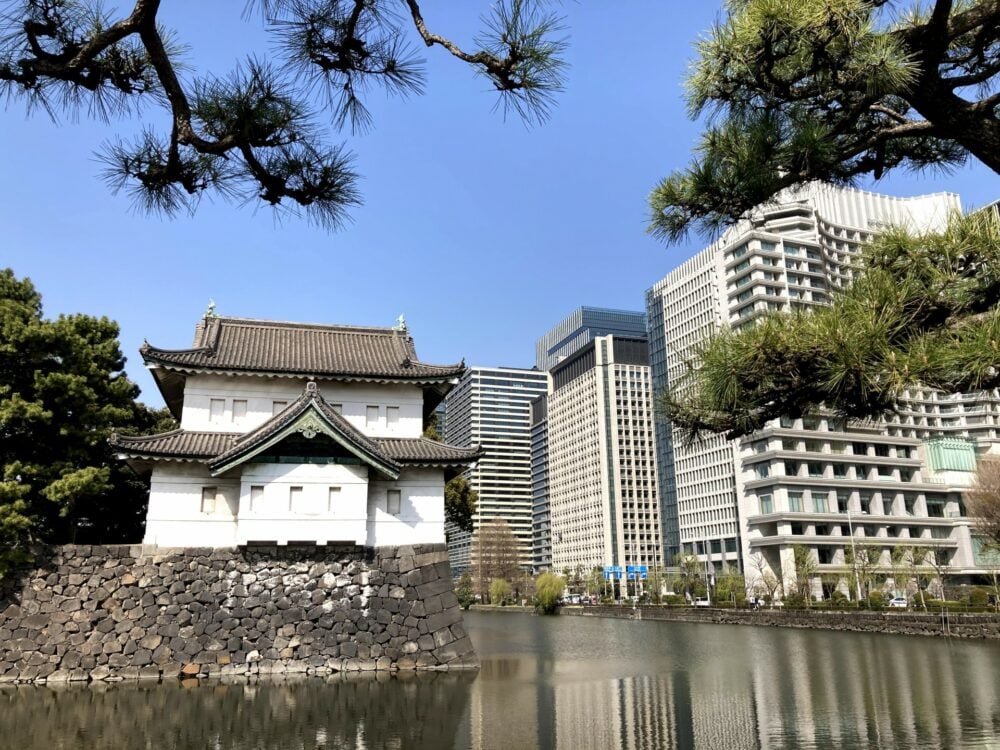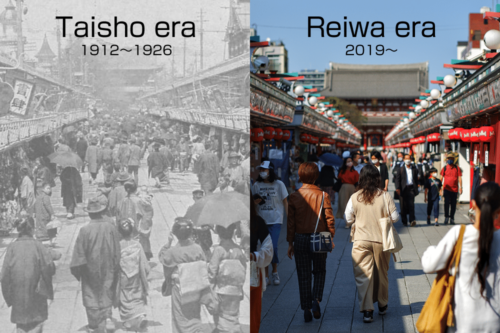Choosing a favorite baby name can feel intimacy and affectionate. When parents name their children, they put a lot of thoughts and consideration into it.
Share this link via
Or copy link
Below are navigation links that will take you to the main text and navigation menus.
26,551 first names, 70,620 last names, 333,585 kanji variations.
one of the best Japanese name search tools for your baby!

Popular names change with the period. Certain names are trendy in each generation. This is because names change with the influence of each period, events, society, celebrities, etc. For Japanese people, they might often guess the generation in which a person was born just by listening to their name. Here is a recent history o of some naming trends.
Contents
Around 1910s-1930s, the most popular name for boys was “清 (Kiyoshi)”. It had been at the top of the “Popular Name Rankings” for nearly 30 years.
The meaning of the word “清” is innocence and purity. It was said that this may have come from the moral values that people had at the time. This may become the basis for the integrity of the Japanese people’s character today.
During the same period, “清” was also popular for a girls name and it comes with “子(ko)” then made it ”清子(Kiyoko)”. And from this period onwards, women’s names almost always ended in “子(Ko)”. e.x. 文子(Fumiko), 幸子(Sachiko), etc.
The “子(ko)” was used as a name for an upper-class woman, then it spread around general people. The name “子(ko)” created an impression of elegance and nobility, which was popular in those days.
In the 1940s, “勝(Masaru)”, “勇(Isamu)” and ”武(Takeshi)” became popular names for boys. “勝” means victory. “勇” means bravery, and ”武” is a warrior.
Interestingly, a popular name among girls was also “勝子(Katsuko)”. This was a time when Japan was in the midst of the Second World War. You can see the historical context of the period reflected in the popular name choices of the time.
After the year that World War II ended, names like “勝(Masaru)”, “勇(Isamu)” and ”武(Takeshi)” were no longer in vogue. Boys were popularly named ”稔(Minoru)” and “豊(Yutaka)”. Both mean that the grain will be fertile.
Also, the names “恵子(Keiko)” and “幸子(Sachiko)” were popular at this time for girls’ names. The meaning of “恵” is grace and boon and “幸” is happiness. It showed that people were looking for happiness in the new world during the hard times right after the war. Perhaps that might be a sign of people’s desire to create a new generation after the war is over.
For nearly two decades, starting in 1960, the boy’s name ”誠(Makoto)” was very popular as a trendy name. The meaning of ”誠” is loyalty. It has been said that this may have reflected the loyalty of workers to their companies during this time of rapid growth in Japan.
Also at this time, girls’ names began to end with “美(mi)” instead of “子(ko)”. (“美” means beauty.) For example, “直美(Naomi)” and ”明美(Akemi)” were the new trend, and names with ”子(ko)” slowly fading. (“直” is straightforward, ”明” is lighting.)
In the 1990s, the trend in names changed significantly and became even more creative. Increasingly, more and more boys’ names used characters that remind you of nature, such as “海 –meaning sea” and “翼 –meaning wings” in their names.
Also, kanji with a majestic and magnificent impression, such as “翔-meaning fly,” was becoming more popular.
Girls’ names also began to use kanji that were associated with nature and the seasons, such as ”桜 –meaning cherry blossoms” and “春 –meaning spring”.
At the same time, in the 2000s, with the spread of a culture that respects the individual, more and more parents are choosing to use names with unusual pronunciations that are not found in the dictionary.
For example, a boy’s name is “男” -meaning a boy, and its pronunciation is “Adam”. In Japanese, there is no way to read “Adam” with the kanji for “男”, but they use the kanji for “男” and apply the reading of “Adam” to it.
Until about 1960, the most popular names for boys were those using only one Chinese character. For example, as previously stated, “清(Kiyoshi)”, “勝(Masaru)”, “勇(Isamu)”. ”武(Takeshi)”, and ”誠(Makoto)” etc.
The fads may repeat themselves. Lately, the retro single-kanji names seem to be trending again as there’s a nostalgic feel to them. For example, “蓮(Ren)” -meaning lotus, “湊(Minato)” -meanig harbor, etc.
And girls’ names with ending “子(ko)” are attracting attention again. For example, “桜子(Sakurako)”, “梨子(Riko)” etc. (“梨” means pear.)
However, the difference from the old trend is the parents sometimes use of the other kanji instead of “子(ko)”. For instance, some people use the kanji ”湖” -meaning lake, ”心” -meaning heart, “来” -meaning coming. These are all pronouncing “ko”.
It’s interesting to see how name trends have shifted over time.
In 2021, the pandemic of COVID-19 has had a huge impact on the world, and I wonder how this event and future events will influence naming trends going forward.
Reference: 明治安田生命 名前ランキング



Sort by Most Kanji Variations
This is the order of names with many variations of kanji.
Basically, names with more variations are more common and familiar to the Japanese.
Sort by Most Viewed
The names are sorted by the number of times they have been viewed on this site. This ranking is based on the behavior of users around the world, including Japan, so it does not mean that the names are commonly viewed by Japanese people only.
Please note that just because a name has been viewed more times does not mean it is a famous name in Japan.
What is Hiragana?
Hiragana is a syllabary used in written Japanese, which originated from the cursive style of Kanji.
What is Katakana?
Katakana is also a Japanese syllabary. Basically, the characters don't have any meaning by themselves, they only represent the sounds.
Japanese try to express the words came from foreign languages with the most similar sounds in Japanese using Katakana.
What is English Transcription?
English Transcription is a term used when translating Japanese names into English. It represents a romanised version of the name with the aim of reproducing the pronunciation as accurately as possible. English Transcription can also be used for name searches.
Japanese Style Nickname
In Japan, nicknames are commonly used to express familiarity and affection. Here are key features and contexts:
Shortened Forms: Names are often shortened for ease and intimacy, such as 'Yuki' from 'Yukiko' or 'Taka' from 'Takashi'.
Suffixes: Terms like 'chan' for girls and 'kun' for boys are added to names among close friends and family. However, 'chan' can also be used for boys during childhood. Additionally, among adults who are very close, like best friends, 'chan' may still be used to convey affection and familiarity. More Details
Usage and Cultural Aspects: Nicknames are typically used in informal settings among friends, family, or close colleagues, and are not suitable for formal or professional environments. The use of a nickname suggests a degree of intimacy and should reflect the nature of the relationship. Young people often demonstrate creativity in their social interactions by crafting unique nicknames.
Note: In Japanese, the long vowel sound is indicated by a special character called a "chōonpu" (長音符), which looks like a horizontal dash (ー). This character serves to extend the duration of the vowel sound immediately preceding it. For instance, in the name "あーちゃん" (A-chan), the "あ" (A) is extended, producing a prolonged "ah" sound, similar to the "a" in "father."
Households?
The names are sorted by the number of Japanese households where the surname is used.
The more households there are, the more famous and common the surname is.
About this site's data of last names
